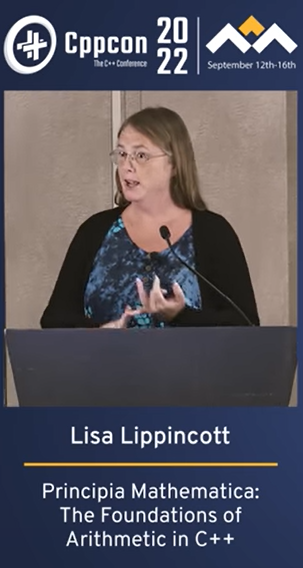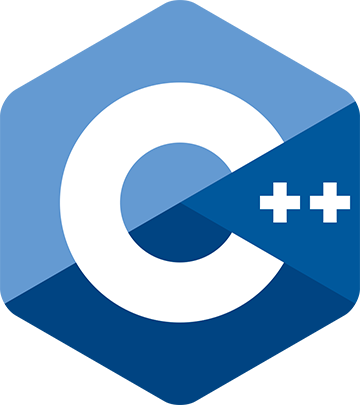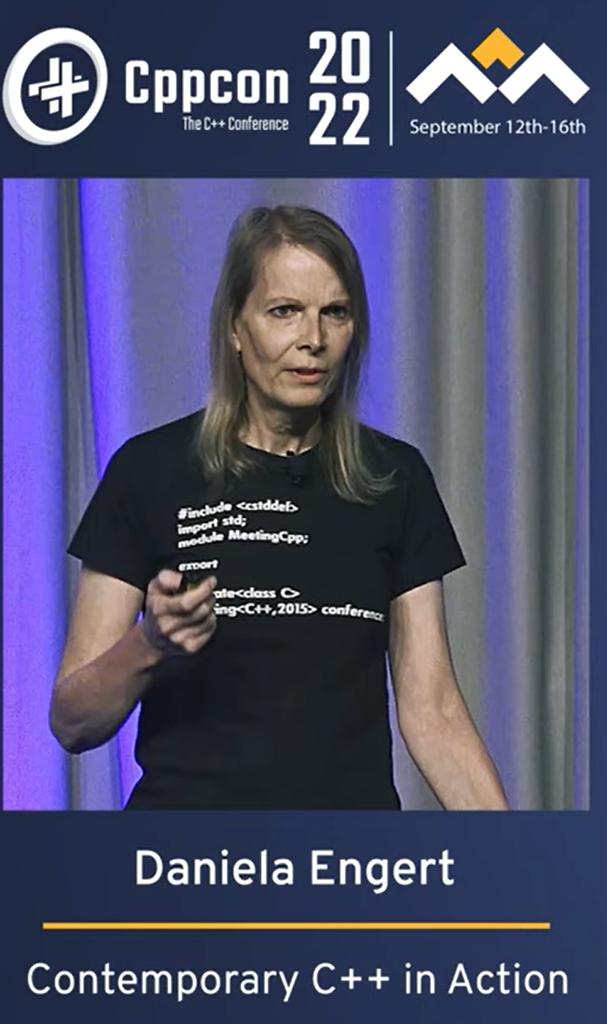CppCon 2022 online opening keynote on C++ Math: Lisa Lippincott
 A new CppCon 2022 keynote video is available:
A new CppCon 2022 keynote video is available:
CppCon 2022 Keynote on C++ Math: Lisa Lippincott
From the announcement:
Lisa Lippincott on C++ math... her CppCon 2022 Online Opening Keynote in Aurora, Colorado!

 Hot off the press from CppCon:
Hot off the press from CppCon: Another CppCon 2022 keynote video is posted:
Another CppCon 2022 keynote video is posted: The second video from CppCon 2022 has now been posted:
The second video from CppCon 2022 has now been posted: Registration is now open for CppCon 2022, which starts on September 11 and will again be
Registration is now open for CppCon 2022, which starts on September 11 and will again be